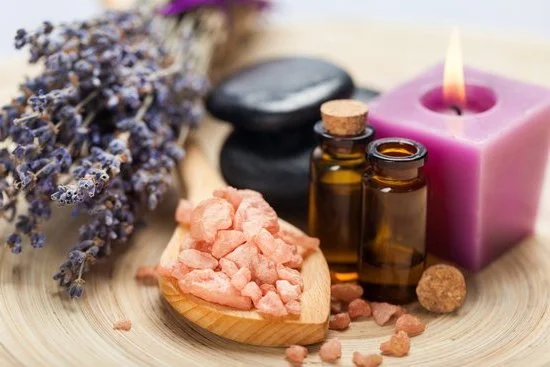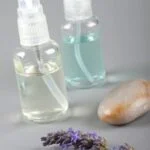How does an aromatherapy inhaler work? Aromatherapy inhalers have been used for centuries to promote overall health and well-being. In this article, we will delve into the basics of aromatherapy inhalers, including their history, benefits, and uses. Understanding the concept of aromatherapy inhalers is essential for anyone looking to harness the power of essential oils for therapeutic purposes.
Aromatherapy inhalers, also known as essential oil inhalers, are portable devices that deliver a concentrated dose of essential oils through inhalation. The practice dates back to ancient civilizations and has been used traditionally for its holistic healing properties. Aromatherapy inhalers offer a convenient and effective way to experience the benefits of essential oils on the go, making them a popular choice for individuals seeking natural remedies.
The science behind how aromatherapy inhalers work lies in the impact of essential oils on the brain and nervous system. Research has shown that inhaling aromatic compounds can trigger various physiological responses, including relaxation, stress relief, and improved mood. As we explore the world of aromatherapy inhalers further in this article, we will uncover the fascinating connection between essential oils and their effects on health and wellness.
The Science Behind Aromatherapy Inhalers
Aromatherapy inhalers work by using essential oils to stimulate the olfactory system, which in turn affects the brain and nervous system. When the aroma from the essential oils is inhaled, it travels through the nasal cavity and reaches the olfactory nerve.
This nerve is directly connected to the brain’s limbic system, which plays a role in emotions, behaviors, sense of smell, and long-term memory. The limbic system also regulates several physiological functions such as heart rate, blood pressure, and stress levels.
Research has shown that certain essential oils can have a calming or stimulating effect on the mind and body when inhaled through aromatherapy inhalers. For example, lavender essential oil is commonly used to promote relaxation and reduce anxiety, while peppermint essential oil can improve focus and mental clarity. These effects are due to the chemical components of the essential oils interacting with receptors in the olfactory system and subsequently influencing neurotransmitter activity in the brain.
Aromatherapy inhalers have been studied extensively for their potential therapeutic benefits. Clinical trials have demonstrated positive outcomes for conditions such as stress, anxiety, insomnia, and even pain management when using aromatherapy inhalers. While more research is needed to fully understand how specific essential oils affect different aspects of health and wellness when inhaled, current evidence suggests that aromatherapy inhalers can be a valuable tool for improving overall well-being.
| Essential Oil | Therapeutic Benefit |
|---|---|
| Lavender | Promotes relaxation and reduces anxiety |
| Peppermint | Improves focus and mental clarity |
Types of Aromatherapy Inhalers
When it comes to aromatherapy inhalers, there are several different types available in the market. Each type has its own unique features and benefits, catering to individual preferences and needs. Here are some of the most common types of aromatherapy inhalers:
- Personal Inhalers: These are small, portable inhalers that can be carried around in a pocket or bag. They typically contain a cotton wick or pad that is infused with essential oils. Personal inhalers are great for on-the-go use and allow users to discreetly enjoy the benefits of aromatherapy throughout the day.
- Nasal Inhalers: Also known as nasal sticks or nasal inhaler tubes, these are designed for direct inhalation through the nose. They often come in a tube-shaped container with a twist-off cap that reveals a wick soaked in essential oils. Nasal inhalers are popular for targeting respiratory issues and promoting clear breathing.
- Electric Aromatherapy Inhalers: These devices use a small fan to disperse essential oil vapors into the air. They are typically powered by batteries or USB, making them ideal for use in office spaces, cars, or other indoor environments.
Each type of aromatherapy inhaler has its pros and cons, depending on factors such as convenience, effectiveness, and personal preference. When choosing an aromatherapy inhaler, it’s important to consider how and when you plan to use it in order to select the best option for your lifestyle.
In addition to pre-made options available for purchase, individuals also have the option of creating custom aromatherapy inhalers at home using their preferred essential oils. This allows for greater control over the scent and potential therapeutic properties of the inhaler contents. Regardless of which type is chosen, understanding how does an aromtherapy inhaler work can help users maximize its benefits within any daily routine.
How to Use an Aromatherapy Inhaler
Aromatherapy inhalers are a popular and convenient way to experience the benefits of essential oils on the go. But how does an aromatherapy inhaler work exactly? These small, portable devices are designed to deliver the therapeutic properties of essential oils through inhalation. When you inhale through the nostrils, the aromatic compounds in the essential oils stimulate olfactory receptors, sending signals to the brain and influencing emotions and physiological responses.
The process of using an aromatherapy inhaler is simple and straightforward. Typically, these inhalers consist of a small tube or container that holds a cotton wick infused with essential oils.
To use an aromatherapy inhaler, you simply unscrew or remove the top cap, bring the open tip close to your nostrils, and take slow, deep breaths while inhaling the aroma. This allows for direct inhalation of the essential oil vapors without any risk of ingesting or applying them directly to the skin.
The effectiveness of aromatherapy inhalers lies in their ability to bypass the digestive system and directly target the limbic system in the brain, which governs emotions, memories, and certain autonomic functions such as heart rate and blood pressure. As a result, different types of essential oils used in aromatherapy inhalers can produce varied effects on mood, stress levels, mental clarity, and overall well-being.
Whether it’s promoting relaxation, boosting energy, or providing relief from respiratory issues like congestion or allergies, aromatherapy inhalers offer a safe and non-invasive way to harness the healing properties of essential oils.
Choosing the Right Essential Oils for Aromatherapy Inhalers
When it comes to using aromatherapy inhalers, choosing the right essential oils is crucial for achieving the desired therapeutic benefits. Different essential oils have unique properties and effects on the mind and body, making it important to understand their characteristics before creating custom blends for aromatherapy inhalers.
One of the factors to consider when selecting essential oils for aromatherapy inhalers is their specific therapeutic properties. For example, lavender oil is known for its calming and relaxing effects, making it a great choice for alleviating stress and promoting better sleep. On the other hand, peppermint oil has invigorating and energizing properties, which can help with boosting focus and mental clarity.
It’s also important to match essential oils with individual needs and preferences. Some people may prefer floral scents like rose or jasmine for their calming effects, while others may find citrus scents like lemon or orange more uplifting and refreshing. Understanding personal scent preferences can play a significant role in creating customized blends for aromatherapy inhalers.
In addition to individual preferences, creating custom blends allows individuals to tailor the aromatherapy experience to address specific health concerns. For example, blending eucalyptus and tea tree oil can be beneficial for addressing respiratory issues and allergies, while combining bergamot and ylang-ylang oil can help in managing anxiety and promoting emotional well-being.
Overall How Does an Aromatherapy Inhaler Work is crucial in understanding how effective an aroma therapy inhaler can be since different scents impact our physical health differently. Whether it’s calming stress, improving sleep quality or providing relief from respiratory issues, choosing the right essential oils is essential in maximizing the benefits of aromatherapy inhalers.
The Effects of Aromatherapy Inhalers on Health and Wellness
Aromatherapy inhalers have been gaining popularity for their potential impact on health and wellness. By inhaling essential oils, individuals can experience various benefits that may positively affect their overall well-being. The question of how does an aromatherapy inhaler work is often linked to its effects on health, including stress management, sleep improvement, and respiratory support.
One of the key effects of aromatherapy inhalers is their ability to manage stress and anxiety. Essential oils like lavender, chamomile, and bergamot have been found to have calming properties that can help reduce feelings of stress and promote relaxation. When inhaled through an aromatherapy inhaler, these essential oils can have a direct impact on the limbic system in the brain, which is responsible for emotions and memories.
In addition to stress management, aromatherapy inhalers are also known for their potential to improve sleep and relaxation. Certain essential oils, such as lavender and valerian root, have sedative properties that may aid in promoting restful sleep. Using an aromatherapy inhaler before bedtime or during moments of rest can create a soothing environment that supports better sleep quality and relaxation.
Furthermore, aromatherapy inhalers can also be used to address respiratory issues and allergies. Essential oils with antiviral, antibacterial, or anti-inflammatory properties, such as eucalyptus or peppermint, can be beneficial for easing symptoms of congestion or allergies when inhaled through an aromatherapy inhaler. The direct inhalation of these essential oils may help clear the airways and provide relief from respiratory discomfort.
| Effect | Essential Oils |
|---|---|
| Stress Management | Lavender, Chamomile, Bergamot |
| Sleep Improvement | Lavender, Valerian Root |
| Respiratory Support | Eucalyptus, Peppermint |
Aromatherapy Inhalers vs Other Aromatherapy Methods
When it comes to incorporating aromatherapy into your wellness routine, there are various methods to choose from, each with its own unique benefits and drawbacks. Aromatherapy inhalers, also known as essential oil inhalers or nasal inhalers, offer a convenient and portable way to experience the therapeutic effects of essential oils. But how do they compare to other popular aromatherapy methods such as diffusers and topical application?
Aromatherapy Inhalers
Aromatherapy inhalers work by delivering the aromatic compounds of essential oils directly to the olfactory system through inhalation. When the inhaled molecules reach the olfactory receptors in the nasal cavity, they can have a direct impact on the limbic system, which is responsible for emotions, memories, and arousal. This direct pathway allows for quick absorption and almost immediate effects on the body and mind.
One of the major advantages of aromatherapy inhalers is their portability and convenience. They can easily be carried in a pocket or purse, allowing for discreet use anywhere, whether at home, in the office, or while traveling. Additionally, since they do not require electricity or water like diffusers do, they are ideal for on-the-go aromatherapy.
Diffusers
Aromatherapy diffusers disperse essential oil molecules into the air through a variety of methods such as ultrasonic vibrations, heat, or airflow. The dispersed molecules are then inhaled or absorbed through the skin when using a nebulizing or ultrasonic diffuser.
One of the main benefits of diffusers is their ability to cover larger spaces with aromas that can create an inviting atmosphere throughout a room. Diffusers are also great for using essential oils to purify and freshen indoor air quality.
Topical Application
Using essential oils topically involves applying diluted oils directly onto the skin through massage oils, lotions, or creams. When applied topically, essential oils can be absorbed through the skin and may provide localized effects based on where they are applied.
Topical application is especially beneficial for targeting specific areas of discomfort or promoting healthy-looking skin. However, compared to inhalation methods like aromatherapy inhalers and diffusers, topical application may have less immediate effects on mood support or emotional well-being.
When deciding between these different methods of aromatherapy, it’s important to consider individual preferences as well as specific wellness goals. Each method offers its own unique advantages and may be suitable for different situations or environments. Ultimately.
choosing which method to use will depend on personal preferences and desired outcomes.
Making Aromatherapy Inhalers at Home
DIY Recipes for Creating Personalized Aromatherapy Inhalers
Making your own aromatherapy inhaler at home can be a fun and rewarding process. There are many different essential oils and blends that you can use to create your personalized inhaler. Some popular choices for DIY aromatherapy inhalers include lavender for relaxation, peppermint for energy, eucalyptus for respiratory support, and citrus blends for mood enhancement. By experimenting with different essential oil combinations, you can customize an inhaler to suit your specific needs and preferences.
Sourcing Quality Ingredients for Homemade Aromatherapy Inhalers
When making your own aromatherapy inhaler, it’s important to use high-quality ingredients to ensure the effectiveness of the blend. Look for pure, therapeutic-grade essential oils from reputable suppliers. You’ll also need blank inhaler tubes, which can typically be found at health food stores or online retailers. Additionally, consider using carrier oils such as jojoba or fractionated coconut oil to dilute the essential oils before adding them to the inhaler wick.
Safety Considerations and Best Practices for Making Aromatherapy Inhalers at Home
It’s crucial to follow safety guidelines when creating aromatherapy inhalers at home. Essential oils are potent substances that should be used with care. Always dilute essential oils appropriately before adding them to the inhaler wick to prevent skin irritation or sensitization.
Additionally, label your homemade inhalers with the specific blend used and the intended purpose. Store them in a cool, dark place away from direct sunlight or heat sources. By practicing safe blending techniques and proper storage, you can enjoy the benefits of homemade aromatherapy inhalers without compromising safety.
Overall, making aromatherapy inhalers at home allows you to explore different scent combinations and create personalized blends tailored to your individual wellness goals. With the right ingredients and precautions in place, DIY aromatherapy inhalers can enhance your self-care routine while promoting a sense of well-being.
Conclusion
In conclusion, aromatherapy inhalers offer a convenient and effective way to experience the benefits of essential oils on a daily basis. Throughout this article, we have explored the basics of aromatherapy inhalers, delved into the science behind their effectiveness, discussed different types available in the market, and provided guidance on how to use them properly.
It is evident that these inhalers have numerous positive effects on health and wellness, from managing stress and anxiety to improving sleep and relaxation. The versatility of aromatherapy inhalers makes them a valuable tool for promoting overall well-being.
One of the most common questions about aromatherapy inhalers is how they work. By inhaling essential oil molecules through the nasal passage, they are able to reach the olfactory nerves and stimulate the brain’s limbic system, which is responsible for emotions, memories, and arousal. This direct connection between the sense of smell and brain activity explains why aromatherapy inhalers can have such profound effects on mood and mental state.
As we encourage readers to try aromatherapy inhalers for their own wellness journey, it is important to remember that individual needs and preferences vary when it comes to choosing essential oils. Whether it’s creating custom blends for specific purposes or simply enjoying your favorite scents, there are endless possibilities for personalizing your aromatherapy experience. By incorporating aromatherapy inhalers into your daily routine, you can harness the power of nature’s scents to enhance your physical and emotional well-being.
Frequently Asked Questions
Is It Safe to Use an Aromatherapy Inhaler?
Using an aromatherapy inhaler is generally safe when used as directed. However, it’s important to be aware of any potential allergies or sensitivities to certain essential oils. It’s also advisable to consult with a healthcare professional, especially for those with underlying health conditions.
What Are the Effects of Aromatherapy Inhalation?
The effects of aromatherapy inhalation can vary depending on the essential oils used. Some commonly reported effects include relaxation, stress relief, improved mood, and even relief from certain respiratory symptoms like congestion. The inhalation of these oils can also stimulate the limbic system in the brain, which is associated with emotions and memories.
How Long Does an Aromatherapy Inhaler Last?
The duration of an aromatherapy inhaler largely depends on how frequently it is used. On average, a single inhaler can last anywhere from one to three months if used a few times a day. However, this can vary based on individual usage patterns and the size of the inhaler itself.

Are you looking for a natural way to improve your health and wellbeing?
If so, aromatherapy may be the answer for you.





